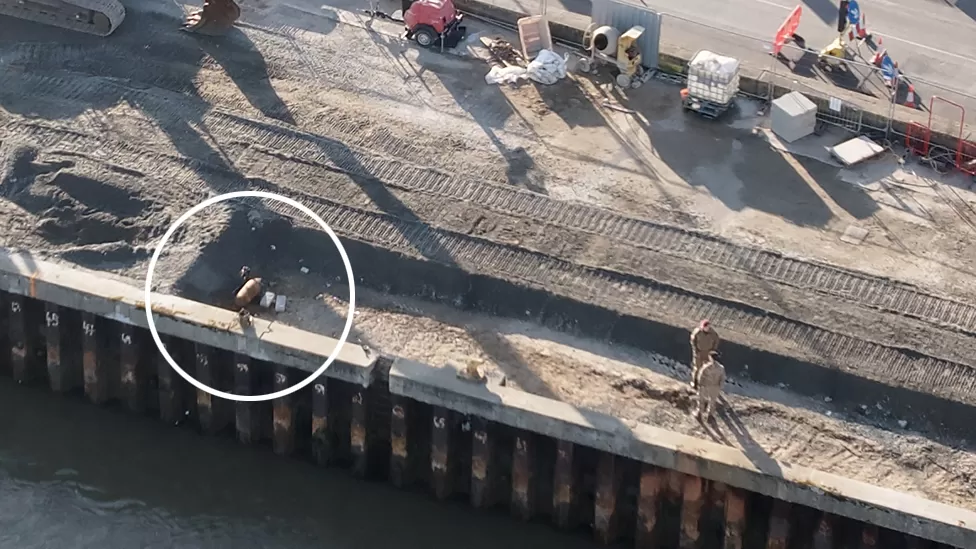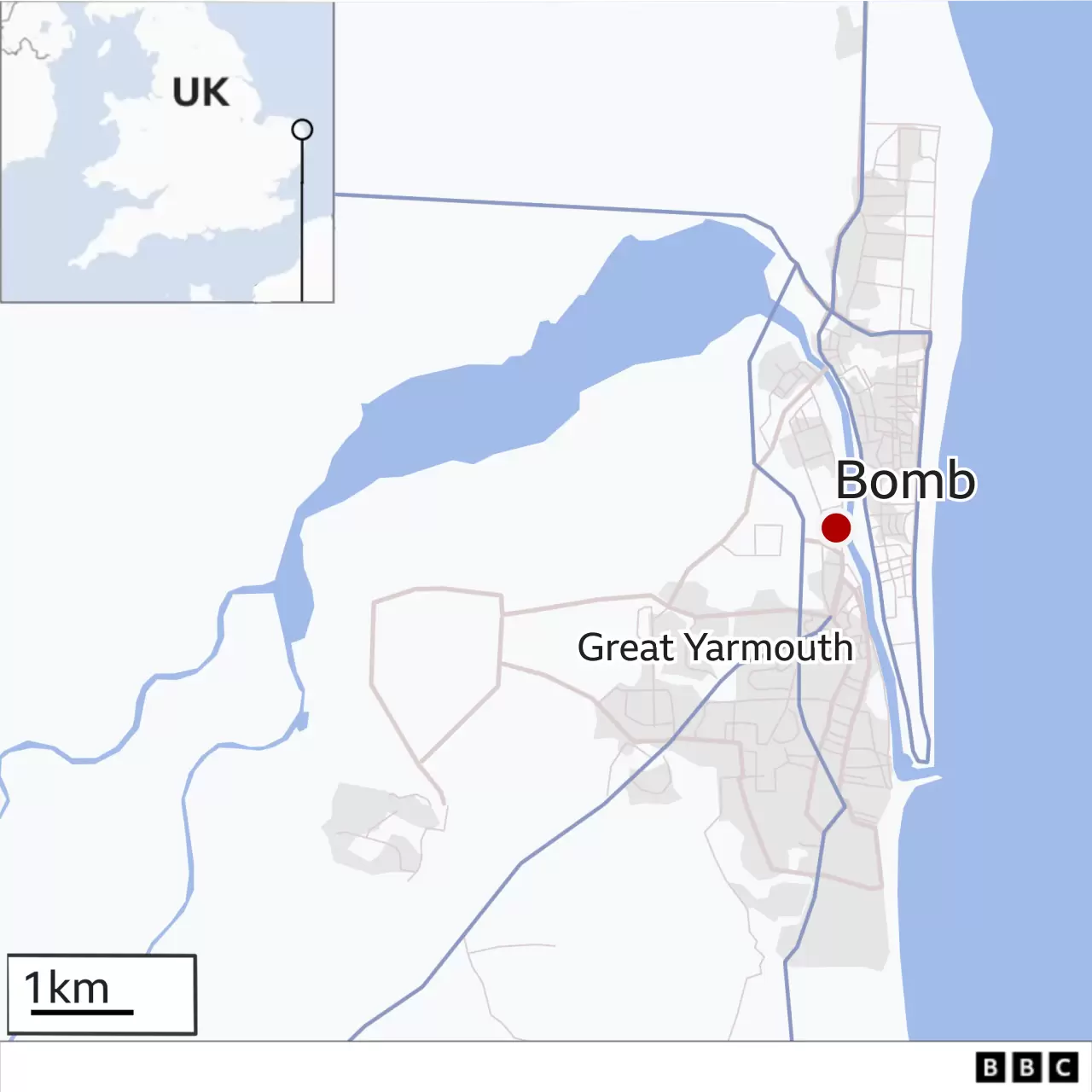A World War Two bomb found in Great Yarmouth detonated while work was being done to defuse it, causing a huge blast that was heard for miles. Army specialists were attempting to disarm it when there was an unplanned detonation at about 17:00 GMT. People on social media said they heard a loud bang and felt buildings shake 15 miles (24km) away. There have been no reports of injuries among the Army, emergency services or the public, Norfolk Police said.

Cordons were put in place when the bomb was first discovered close to two gas pipes on Tuesday, and work began to make it safe. The cordons, at 200m (656ft) and 400m (1,312ft) from the bomb, were lifted on Friday evening. Most roads have been reopened and residents have been allowed to return to their homes. Norfolk’s assistant chief constable, Nick Davison, said: “The device detonated shortly after work had started to disarm the device. “The approach had been the safest option to disarm the device. However, it always carried a risk of unintended detonation. “Thankfully, all personnel have been accounted for and agencies are coming together to assess damage to the river wall.”

Norfolk County Council’s deputy leader, Graham Plant, issued “a heartfelt thank you” to those who brought the incident to “a safe conclusion”. “From the emergency services, the Army, government agencies, frontline staff at both the borough and county councils, all the contractors and community volunteers and anyone who has helped or supported in any way, you all deserve our utmost praise,” he said. “We will continue to support vulnerable residents in this process and our highways team and their colleagues from the Environment Agency can begin to assess the impact of the explosion.” Local resident Conrad Impey said he was relieved to be back in his home after staying with relatives.
The 46-year-old, his fiancée, their daughter and grandson were evacuated from their home on Admiralty Road at 23:10 GMT on Tuesday. “It was a really nervous time,” he said. “We just kept thinking ‘What’s happening, what’s going on, is it going to blow up the house?'” Mr Impey’s fiancée, who did not want to be named, heard the explosion on Friday evening. “I just heard a bang and a bit of a shake,” she said. The family returned to their home at 19:00 GMT. “We feel a lot better now. We’re happy to be home,” said Mr Impey.

The device – about 1m (3.2ft) long and weighing about 250kg (39st 5lbs) – was discovered on Southdown Road by a contractor working on the third crossing over the River Yare. Specialists had built a protective sand barrier around the bomb prior to attempts to detonate it, as part of safety measures. Area commander, Supt Nathan Clark, said the explosion “was always a possibility”. However, he said the mitigation, including the sand barrier, put in place “appears to have worked”. He said: “If you imagine what that explosion would have looked like without that [mitigation] it really would have been a catastrophe, a 250kg bomb. “We knew if that was detonated it would have caused serious damage and threat to life and that is why the military, in partnership with Norfolk public services, have done what they’ve done.”

The force said agencies had “assessed the damage caused by the explosion with a number of car windows broken, the top of the scaffolding on the bridge affected and some damage to the flood wall”. A spokesperson for Cadent, which manages the local gas mains network, said: “Our team has carried out a close inspection of our pipes in the vicinity. There is no indication that the blast has caused damage to our assets and gas continues to flow safely.”

Army specialists had initially been planning to cut into the bomb and perform a controlled explosion on Thursday, before taking the remainder of the device out to sea or to a military range for another detonation. Specialists started the process by using a robot to cut the fuse and trigger at about 17:30 GMT on Thursday but abandoned this when water from the cutting process destabilized part of the sand barrier. A decision was then made to switch to a slow burn technique, which was carried out when the device exploded. It was quite a dramatic conclusion to a long, four-day operation. I and some fellow journalists had been asked to gather at the police station for an update on the bomb being defused when suddenly, at around 17:00 GMT, we heard this very loud and very unexpected explosion. It was a huge explosion throwing debris into the air – and from where we were, within a mile, you could see smoke drifting across the River Yare.
![]()





